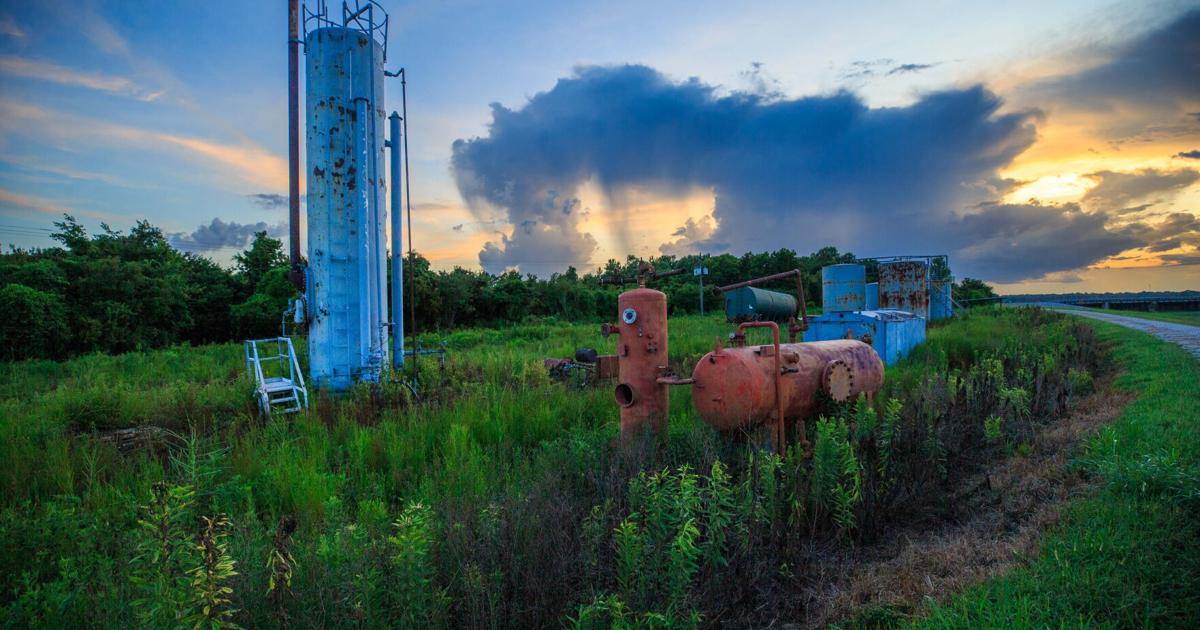
Louisiana’s energy and natural resources agency will be fully reorganized and have its second new name in less than two years starting Wednesday after a suite of internal and legislative changes over the past 21 months.
Officials with the new Louisiana Department of Conservation and Energy, formerly the state Department of Energy and Natural Resources, say the changes will place it on a more modern and transparent footing to balance “economic growth and environmental stewardship.”
The changes are also expected, the department’s secretary has said, to enhance enforcement of the state’s oil and gas sector. It will also streamline permitting, a change welcomed by the industry.
“In many ways, this agency has still been doing things the way it did when first created as DNR nearly 50 years ago. Technology, industry and environmental best practices have changed a great deal over those decades, and it’s time this agency caught up,” Dustin Davidson, secretary of the renamed department, said in a statement earlier this month.
Often at the center of complex disputes in a state rich with energy resources, the department has a large and expanding footprint. It has a hand in regulating oil and gas, pipelines, wind and solar energy, underground injection, carbon capture and sequestration, groundwater use, and development in the coastal zone.
Department officials warned that, though the reorganization would be in effect Wednesday, the full integration from operating under the old structure to the new one could take time.
Among the changes instituted this spring and summer by the Legislature, the reorganization has also done away with a district dating from the mid-1970s that oversaw groundwater use to prevent saltwater intrusion into the Baton Rouge-area’s aquifer. Groundwater regulation in Baton Rouge is now fully under the control of the newly reorganized state agency.
Oil and gas groups welcomed the broader reorganization, while one environmental group said it expected to see little difference from what they claimed is an agency that has been an industry “rubber stamp.”
Anne Rolfes, director of the Louisiana Bucket Brigade, pointed out that the former department secretary who led the reorganization, Tyler Gray, previously led an industry trade group, the Louisiana Mid-Continent Oil and Gas Association.
“This agency is designed by the oil industry for its own benefit, and that should scare everyone in this state,” Rolfes said.
Tommy Faucheux, the current president of LMOGA, countered that his trade group is optimistic the changes will clear up red tape and uncertainty, a shift that is “essential for the state to prosper.”
“It’s important that our state’s regulatory structure can challenge industry to improve while working productively to foster the economic opportunities in oil and gas that will keep our kids here in Louisiana,” he said.
Six new offices
Faucheux and Mike Moncla, president of the Louisiana Oil and Gas Association, also welcomed the arrival of Davidson as the new secretary. Faucheux highlighted his experience with energy policy, while Moncla cited his past work with Davidson, who was previously DENR deputy secretary and a former congressional staffer in Washington.
Gray, Landry’s first appointment to the department, led the reorganization until he stepped down last month. The effort followed an executive order from Gov. Jeff Landry early in his term.
The new department will go by the acronym “C&E,” which had been the Department of Natural Resources for decades before an earlier name change in January 2024 to the Department of Energy and Natural Resources.
Implemented through two regular sessions and one special legislative session, the changes did away with the historical Office of Conservation and shuffled offices within the new department while boosting their number from four to six.
The Office of Conservation was Louisiana’s chief oil-and-gas regulator since the early days of the state’s petroleum industry. The office’s gubernatorially appointed commissioners retained independent regulatory powers through the years even after the office was folded inside DNR.
The Legislature, at department officials’ urging, first removed the administrative division between the department and the office. It then did away with the conservation commissioner and vested the commissioner’s powers in the secretary of the new department.
In the most recent session, Act 458, sponsored by state Sen. Bob Hensgens, R-Abbeville, was the primary vehicle for the reorganization. Many of its more than 225 pages removed responsibilities from the state commissioner of conservation and handed them to the new C&E secretary.
Among the six new offices, the reorganization consolidated oil, gas and coastal management permitting and compliance, the latter of which affects wetlands development, under one Office of Permitting and Compliance.
A separate division, the Office of Enforcement, will handle inspection and enforcement of permitted oil and gas wells and other activities for which the state has regulatory primacy, such as underground injection and carbon capture.
‘Win over the public trust’
In a recent speech to carbon capture executives at LSU, Davidson emphasized the significance of separating permitting from enforcement.
“We saw that as something that needed to change significantly because a lot of times you had folks that were having those relationships with the applicants that then had to turn around and enforce actions against those applicants. Sometimes that can be difficult,” Davidson said in the Sept. 5 speech.
He added that the department has a “robust enforcement system that, I would say, in the past has not been used to our advantage the way it should have been.”



